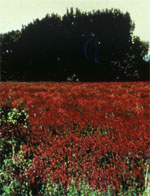Threats to Birds - Purple Loosestrife (Lythrum salicaria)
Overview This plant came to America as a stowaway in ship ballast from Europe in the early 1800s, and was later imported as an ornamental plant and medicinal herb. It now infests more than 400,000 acres of federal wetlands, marshes, and meadows in all states but Florida. Purple loosestrife kills sedges, cattails and bulrush, thus crowding out native plants that provide food and cover for waterfowl. It can also eliminate open water habitat. Purple loosestrife is an especially serious threat to wetlands in the Northeast and upper Midwest near the Great Lakes. At least two dozen states now prohibit its importation and distribution.
Description
A long-lived perrenial that can grow over 9 feet tall with an attractive purple flower stalk. A single plant can annually produce 2 million seeds the size of ground pepper. Stems can be smooth to hairy; four-sided and multi-branched; leaves are 4 “ long; lance-shaped and opposite, or whorled; flowers are magenta with 5 - 7 petals that look wrinkled and crushed; less than ½" long; arranged singly at intervals on the stem; crowned flower spikes appear at the stem tip in mid-summer.
Birds Affected
Waterfowl, marsh birds; Least Bittern; American Bittern, Least Grebe; Black Tern
Control
Uprooting before plant is in flower can stop a fresh infestation. Herbicides present a problem for waterways and are not recommended. Using natural predators--herbivorous beetles native to Europe– are an effective control method. |
